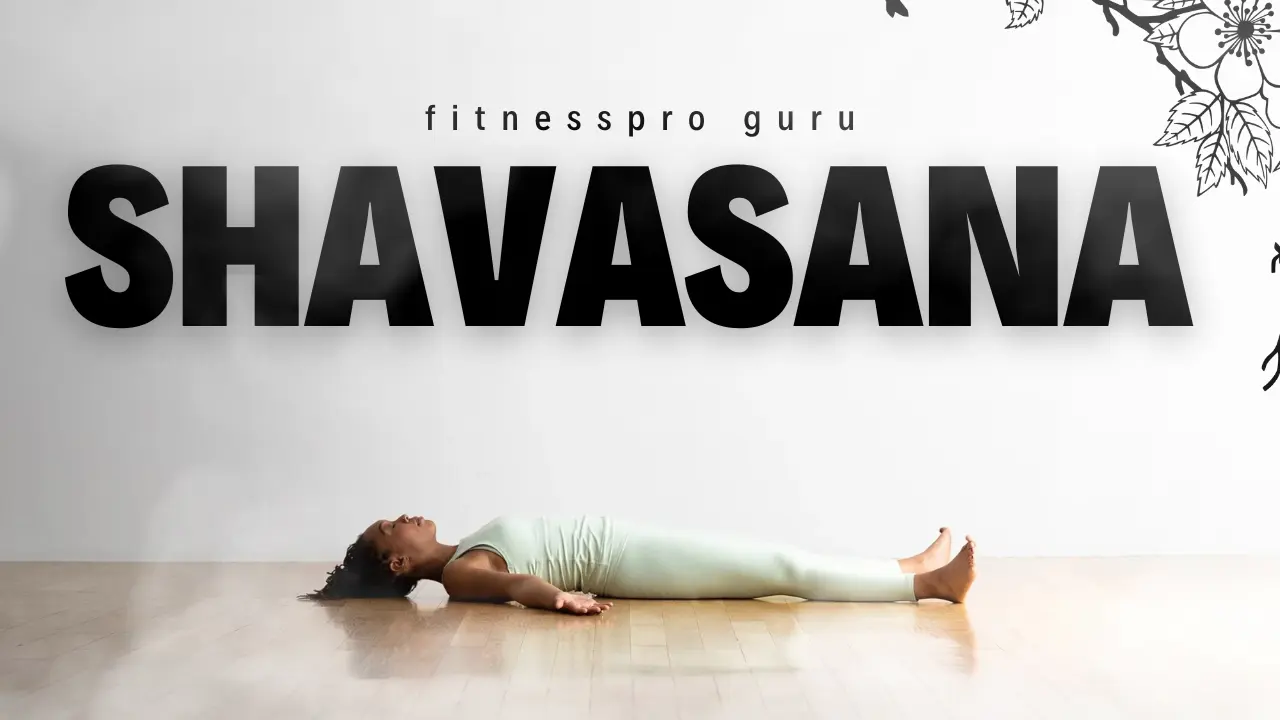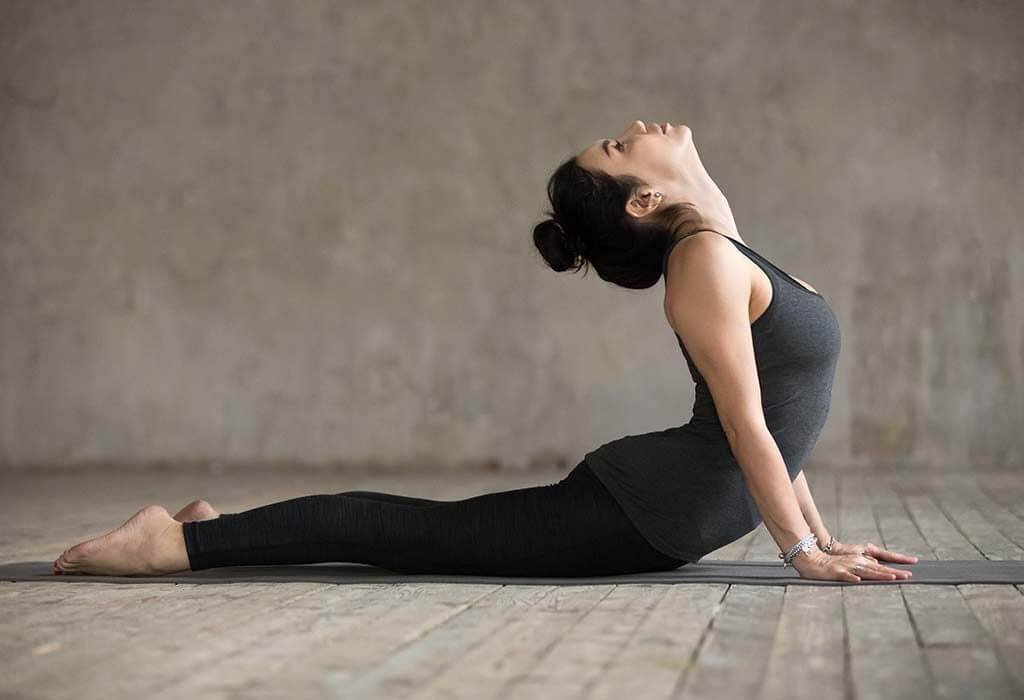
Shavasana, also known as Corpse Pose, is a relaxation and restorative yoga pose typically performed at the end of a yoga session. It is a simple lying-down position that allows the body and mind to relax completely.
Step by Step
Here’s how to practice Shavasana:
- Lie flat on your back on a comfortable surface, such as a yoga mat or a soft carpet. Make sure your body is aligned and straight, with your legs slightly apart and your arms relaxed at your sides, palms facing up.
- Close your eyes gently and take a few deep breaths. Inhale deeply through your nose, expand your abdomen, and exhale slowly, releasing any tension in your body.
- Scan your body from head to toe, consciously releasing any tension you might be holding. Relax your facial muscles, soften your jaw, and let your shoulders sink into the ground.
- Allow your body to become heavy and sink into the surface beneath you. Feel the support of the ground beneath your body, letting it carry your weight.
- As you continue to breathe deeply, focus your attention on your breath. Observe the natural rhythm of your breath, without trying to control it. Feel the gentle rise and fall of your abdomen with each inhale and exhale.
- As thoughts or distractions arise, simply acknowledge them without judgment and let them go. Bring your focus back to your breath and the present moment.
- Remain in this relaxed state for as long as you like, typically for 5 to 15 minutes or even longer if desired. Allow yourself to fully surrender and rest in this pose, experiencing a deep sense of relaxation and rejuvenation.
- When you are ready to conclude the practice, slowly begin to deepen your breath. Gently wiggle your fingers and toes, awakening your body. Stretch your arms overhead and take a full-body stretch, then roll onto your right side in a fetal position, using your arm as a pillow.
- Stay in this fetal position for a few breaths, feeling a sense of gratitude for the practice. When you’re ready, press yourself up into a seated position, taking a moment to transition back to an upright posture.
Shavasana is a wonderful way to integrate and absorb the benefits of your yoga practice, allowing the body and mind to relax deeply. It is especially beneficial for reducing stress, calming the nervous system, and promoting a sense of well-being.
Benefits of Shavasana
Shavasana, or Corpse Pose, offers a range of benefits for both the body and mind. Here are some of the benefits of practising Shavasana:
- Relaxation and Stress Reduction: Shavasana is known for inducing deep relaxation. By consciously releasing tension and allowing the body to rest, it promotes a state of calmness, reduces stress levels, and helps alleviate anxiety.
- Restores Energy: By providing complete physical and mental rest, Shavasana helps restore energy levels. It allows the body to recharge, rejuvenate, and recover from fatigue or exhaustion.
- Lowers Blood Pressure: The relaxation response triggered by Shavasana has been shown to lower blood pressure. By reducing stress and promoting a state of relaxation, it contributes to cardiovascular health.
- Improved Mental Clarity: Shavasana can help clear the mind and improve mental focus. By releasing mental and emotional tension, it enhances mental clarity, concentration, and overall cognitive function.
- Deepens Mind-Body Awareness: During Shavasana, you can cultivate a heightened sense of body awareness. By tuning into physical sensations and observing the breath, you develop a deeper connection between the mind and body.
- Enhances Sleep Quality: Regular practice of Shavasana can improve sleep quality. By calming the nervous system and promoting relaxation, it can help combat insomnia, relieve sleep disturbances, and support more restful sleep.
- Promotes Physical Recovery: Shavasana allows the body to recover after physical exertion, such as a yoga practice or workout. It helps reduce muscle tension, facilitates muscle repair, and aids in the recovery process.
- Stress Management: Shavasana is an effective tool for managing and coping with stress. It teaches you to let go, surrender, and find inner peace amidst life’s challenges, providing a valuable skill that can be applied off the mat as well.
- Balances the Autonomic Nervous System: Shavasana promotes balance between the sympathetic and parasympathetic branches of the autonomic nervous system. It helps regulate heart rate, blood pressure, and other bodily functions, fostering overall well-being.
- Emotional Healing and Relaxation: Shavasana can be a time for emotional release and healing. By allowing yourself to fully relax and let go, you create space for emotional tension to dissipate, promoting a sense of emotional well-being and tranquillity.
Remember that consistent practice is key to experiencing the full benefits of Shavasana. By incorporating this pose regularly into your yoga routine or relaxation practice, you can reap its rewards and enhance your overall physical, mental, and emotional well-being.
Precaution
While Shavasana is generally a safe and relaxing pose, there are a few precautions to keep in mind:
- Physical Comfort: Ensure that you are lying on a comfortable surface, such as a yoga mat or soft carpet. Use additional props, like blankets or bolsters, to support your body and make yourself as comfortable as possible.
- Injury or Physical Limitations: If you have any existing injuries or physical limitations, it’s important to modify the pose accordingly. For example, if you have lower back pain, you can place a bolster or folded blanket under your knees for support. Listen to your body and make any necessary adjustments to ensure your comfort and safety.
- Pregnancy: If you are pregnant, it’s advisable to lie on your side rather than your back during Shavasana. Lying on your back for an extended period may compress the inferior vena cava, a major blood vessel that can affect blood circulation. Use additional support with pillows or props to make yourself comfortable on your side.
- Neck Support: If you experience discomfort in your neck, you can place a small folded blanket or a pillow under your head to provide gentle support and alignment. Ensure that your neck is in a neutral position and not strained.
- Breathing: Maintain natural, relaxed breathing throughout Shavasana. Avoid any forced or strained breaths, allowing your breath to flow naturally and effortlessly.
- Time Limit: While Shavasana can be practised for varying durations, it’s essential to respect your body’s needs and limits. Don’t overextend the duration if you are new to the practice or if you feel any discomfort. Start with a shorter duration, gradually increasing it as you become more comfortable.
- Falling Asleep: While it’s common to feel deeply relaxed during Shavasana, try to stay conscious and aware. Falling asleep during Shavasana may impact the balance of rest and awareness that the pose offers. However, if you genuinely need rest and sleep, it’s okay to allow yourself to do so.
Remember, it’s always a good idea to consult with a qualified yoga instructor or healthcare professional if you have any specific concerns or conditions before practising Shavasana or any yoga pose. They can provide guidance tailored to your individual needs and help ensure a safe and beneficial practice.







